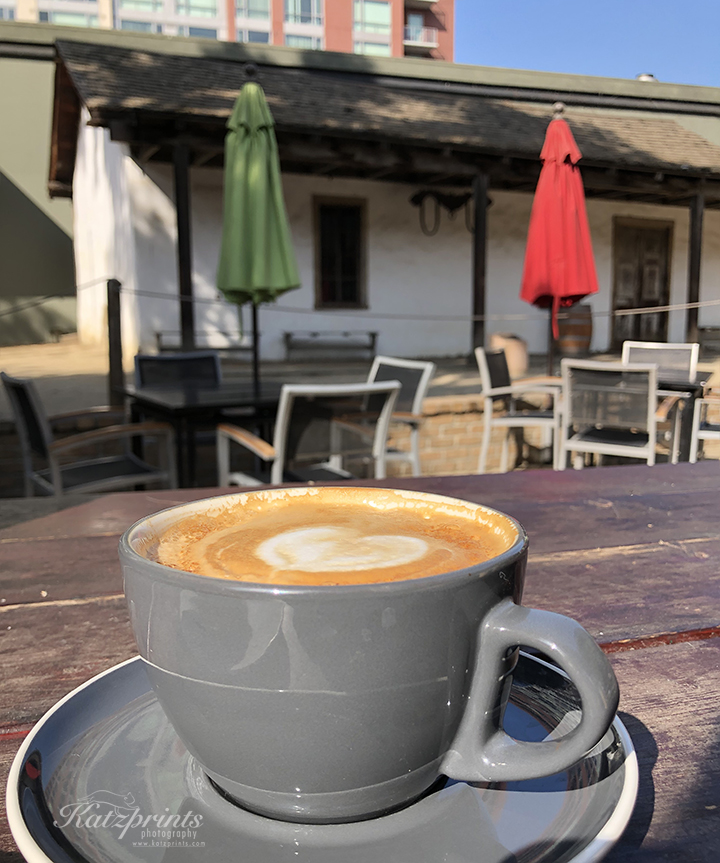Coming from Europe, where building age is often described in hundreds or thousands of years, it took me a while to appreciate the historic buildings of the West Coast … but no worries, by now, I am a fan.
Like so many of us, I first fell in love with the Spanish or California Missions along El Camino Real – I might even write a post about them soon! Recently though, my interest has turned to the less-appreciated building type called adobe.
Luís María Peralta Adobe
The oldest building in San Jose, and its most famous adobe, is the Luís María Peralta Adobe. Manuel González, an Apache Indian, is believed to have built it for his family in 1797, after arriving with the Juan Bautista de Anza expedition. González died in 1804 and four years later the adobe went to Luís María Peralta, giving it the name used today. Peralta was a sergeant in the Spanish Army, commissioner of the Pueblo de San José, and owner of Rancho San Antonio of the East Bay.

González chose the north-west corner of the new Pueblo de San José de Guadalupe to build his home. It still remains in its original location today, but now the Peralta finds itself in the middle of bustling San Pedro Square, where it provides the background for concerts, good meals, and fun drinks with friends.

It is currently open for school program tours only.
Click here to find out more about San Jose’s oldest building.
Roberto Adobe
The only other adobe extant in San Jose is the Roberto Adobe. It is the lesser-known of the pair and only recently opened its doors to the public. The Roberto Adobe was built around 1836 by Native American Roberto Balermino. Roberto grew up with his Ohlone-speaking parents from the Tamien triblet on the Rancheria San Juan Bautista, part of which is now Willow Glen. Both he and his father worked for the padres of Mission Santa Clara and cultivated the land known as Rancho de los Coches (Ranch of the Pigs). In 1836, he petitioned to have the land granted to him. 8 years later, the Mexican governor finally granted him 2,219 acres.

By 1844, Spaniard Antonio Maria Suñol was living on Rancho los Coches with his family. He acquired Rancho los Coches from Roberto in 1847 as part of a debt repayment, and built a brick house adjoining the adobe. It was the first brick house to be completed in Alta California. Roberto’s family was still living in the adobe at that time, and Suñol allowed them to live out their lives there.

Today, the Roberto Adobe and the Suñol House are owned by the non-profit California Pioneers of Santa Clara County and house a free museum. Houses and garden can be visited on Saturdays from 12-2pm.

Find out more about the Roberto Adobe here.
A taste of adobes farther afield
While only two adobes survived in San Jose, there are others not too far away. Wilder Ranch State Park near Santa Cruz has the Bolcoff Adobe from 1840 (which can only be admired from the outside). The Jose Maria Alviso Adobe is located in Milpitas. It was built by José Maria de Jesus Alviso in 1835 or 1837 (depending on the source) and is the only remaining example of the Monterey Colonial style of architecture in the Santa Clara Valley. The Berryessa Adobe in Santa Clara was built in the late 1840s by Juan Chrisostomo Galindo, one of the first colonists to come to the Santa Clara Valley with the de Anza Expedition, just like Manuel González. According to local lore the building was once a mission jail for unruly Indian field hands. Don Francisco Sanchez, owner of Rancho San Pedro, built the Sanchez Adobe in Pacifica between 1842 and 1846. The Alvarado Adobe is a museum open to the public. It is the former home of Juan Alvarado, the governor of Mexican Alta California and is located in San Pablo. The Petaluma Adobe served as the center of General Mariano Guadalupe Vallejo’s 66,000-acre (100 square miles) working ranch from 1836 to 1846. Made from adobe brick and redwood, its design is typical of Hispanic Architecture. The Francisco Solano Alviso Adobe is located in Alameda County near Dublin and was erected in 1844-46 by Francisco Solano Alviso. It was the first adobe house to be built in the Pleasanton Valley.

Of course, there are great examples of adobe architecture in San Juan Bautista and Monterey as well. Since they are part of greater historic plazas, we will talk about them in another post.
Have you visited one of our adobes? Which one is your favorite?

